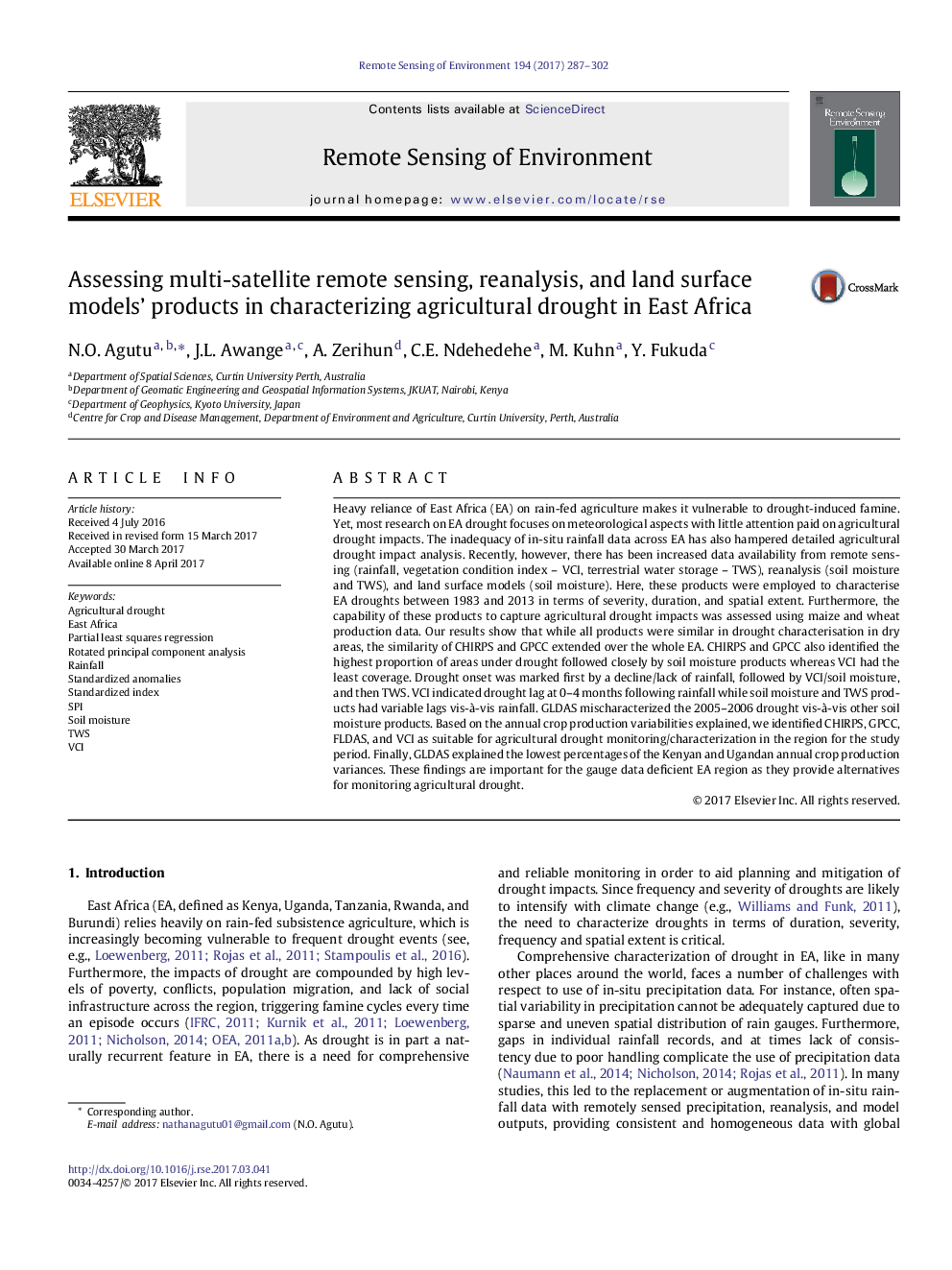| کد مقاله | کد نشریه | سال انتشار | مقاله انگلیسی | نسخه تمام متن |
|---|---|---|---|---|
| 5755008 | 1621206 | 2017 | 16 صفحه PDF | دانلود رایگان |
- Characterized drought and assessed utility of drought indicators in East Africa (EA)
- Order of drought detection is first rainfall, VCI/moisture then TWS.
- VCI has 0-4Â months of lag in detecting drought cycle with respect to rainfall.
- Suitable agricultural drought indicators for EA: CHIRP, GPCC, FLDAS, and VCI
- The land surface models' products generally performed inconsistently over EA.
Heavy reliance of East Africa (EA) on rain-fed agriculture makes it vulnerable to drought-induced famine. Yet, most research on EA drought focuses on meteorological aspects with little attention paid on agricultural drought impacts. The inadequacy of in-situ rainfall data across EA has also hampered detailed agricultural drought impact analysis. Recently, however, there has been increased data availability from remote sensing (rainfall, vegetation condition index - VCI, terrestrial water storage - TWS), reanalysis (soil moisture and TWS), and land surface models (soil moisture). Here, these products were employed to characterise EA droughts between 1983 and 2013 in terms of severity, duration, and spatial extent. Furthermore, the capability of these products to capture agricultural drought impacts was assessed using maize and wheat production data. Our results show that while all products were similar in drought characterisation in dry areas, the similarity of CHIRPS and GPCC extended over the whole EA. CHIRPS and GPCC also identified the highest proportion of areas under drought followed closely by soil moisture products whereas VCI had the least coverage. Drought onset was marked first by a decline/lack of rainfall, followed by VCI/soil moisture, and then TWS. VCI indicated drought lag at 0-4 months following rainfall while soil moisture and TWS products had variable lags vis-Ã -vis rainfall. GLDAS mischaracterized the 2005-2006 drought vis-Ã -vis other soil moisture products. Based on the annual crop production variabilities explained, we identified CHIRPS, GPCC, FLDAS, and VCI as suitable for agricultural drought monitoring/characterization in the region for the study period. Finally, GLDAS explained the lowest percentages of the Kenyan and Ugandan annual crop production variances. These findings are important for the gauge data deficient EA region as they provide alternatives for monitoring agricultural drought.
Journal: Remote Sensing of Environment - Volume 194, 1 June 2017, Pages 287-302
